
Why we need to share nursery rhymes and songs with children
Nursery rhymes and poems are great fun to share with young children but did you know that they also play an important role in building the foundations for learning to read?
If you didn’t, you’re not alone. I didn’t know this when my children were small and today I find that most parents (and even a few fellow teachers) aren’t aware of how important nursery rhymes and poems are for little ones.
Quite a few children are now starting school without knowing nursery rhymes and this has important implications for the way their literacy learning journey unfolds.
We’ll look at how this works but, first, a bit of history.
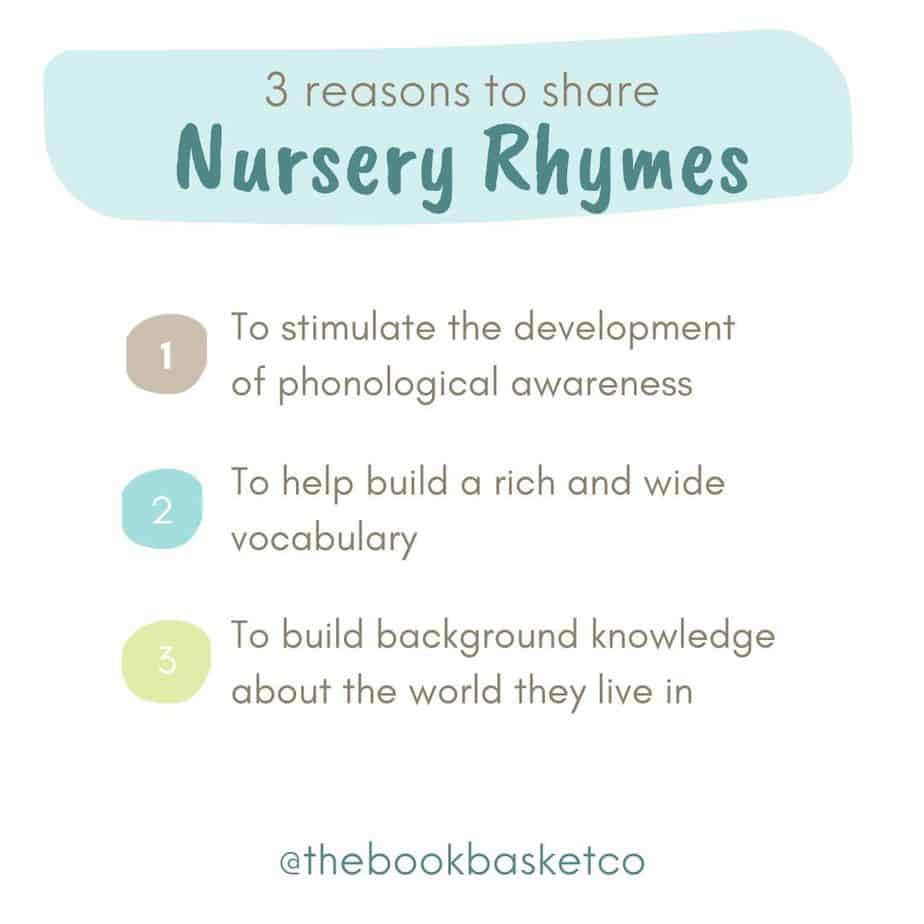
What are nursery rhymes and where did they come from?
Interestingly, the overwhelming majority of nursery rhymes were not actually composed for children and they were not originally called ‘nursery rhymes’.
In fact, the origins of many of the old nursery rhymes for children can be traced back to the 1600s when they were simply called ‘songs’ or ‘ditties’ and were composed for adult audiences. Short, rhyming poems were made up based on historical events and on things people observed in their everyday lives and for hundreds of years these oral rhymes were passed down from one generation to the next. Because they were short and because of the rhyme and rhythm inherent in their structure, they were easy to memorise so they could be recited over and over again.
These short rhymes evolved and eventually were written down in the form we know today and, in the early 1800s, they came to be called ‘nursery rhymes’.
Sometimes these rhymes were recited and sometimes they were sung. Often they were paired with a rhythmic physical activity like skipping or with clapping or other actions (remember London Bridge is Falling Down and Round and Round the Garden?) This made the rhymes more enjoyable for children, introduced some interaction between the participants and sometimes made the rhyme into a game.
Many of the old nursery rhymes we’re familiar with have been used to comfort children and to keep them amused for hundreds of years so why are many children today missing out on them?
Why are nursery rhymes disappearing?
But today, with screens of all kinds playing an ever-increasing role in the lives of our small humans, it seems that nursery rhymes and poems are no longer on our collective radar.
As a primary school teacher, I see increasing numbers of children starting ‘big school’ with little or no knowledge of the old nursery rhymes, knowledge which was once shared by pretty much all English-speaking children. Of course, I find that sad but does it really matter? Aren’t nursery rhymes a bit old-fashioned now?
The short answer is that nursery rhymes and poems matter very much.
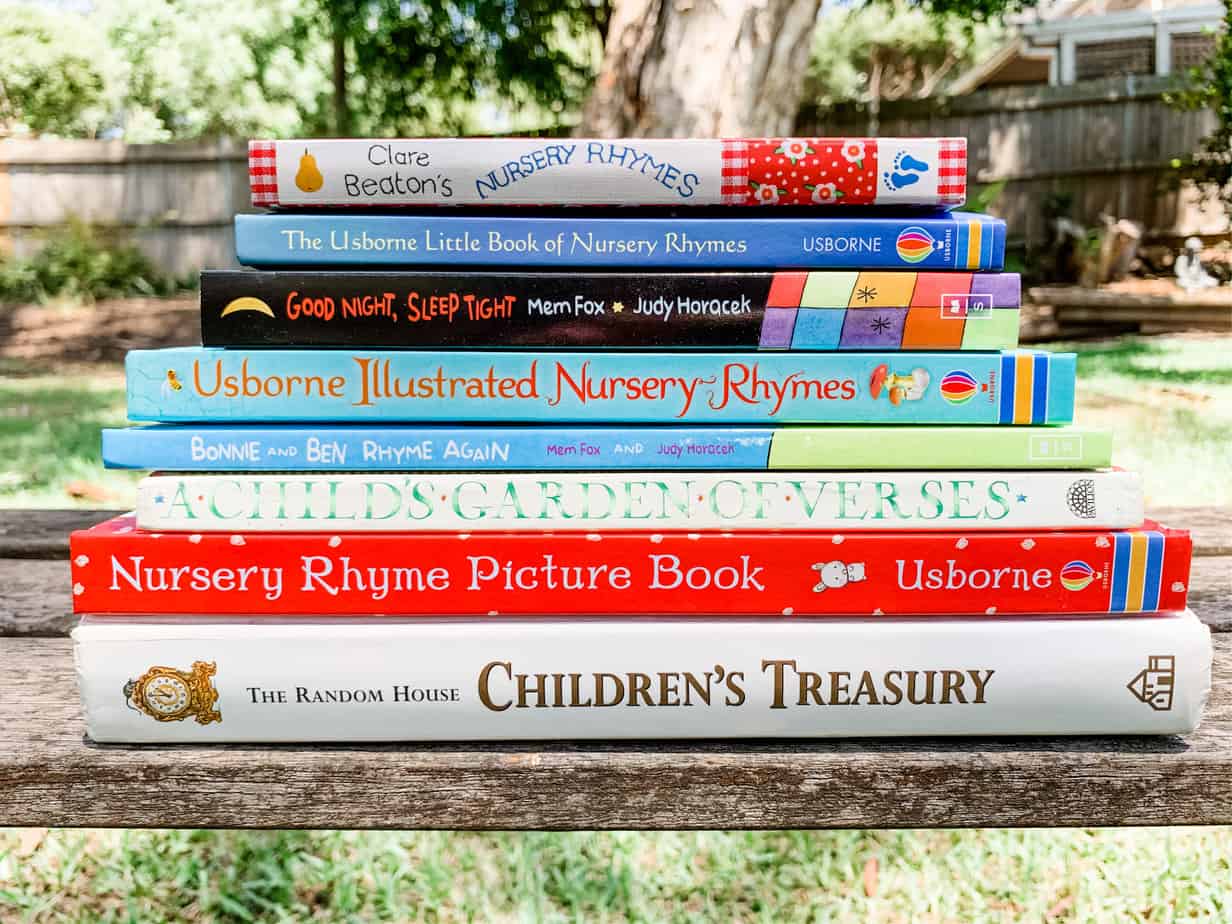
So why are nursery rhymes still important?
Poems, nursery rhymes and songs matter because they are the building blocks of early literacy.
The rhyme and rhythm babies and young children hear in nursery rhymes and poems help them develop an ear for the language they are learning to speak and we know that this is an important prerequisite for learning to read later on.
This ear for language – being able to tune in to the sounds and rhythms of spoken language – is called phonological awareness and many studies over the years have confirmed that it’s a critical skill for learning to read.
In fact, phonological awareness at the age of four is known to be an important and reliable predictor of a child’s later reading ability and nursery rhymes are great stimulators of phonological awareness.
What is phonological awareness?
Phonological awareness is an awareness and understanding of the sound structure of language.
To put it another way, a child who is phonologically aware has developed the ability to consciously tune in to the sounds of spoken language, to understand them and to talk about them.
If you’re thinking this is starting to sound complicated, you’re not alone. I thought the same when the term ‘phonological awareness’ first popped up in my reading (I wasn’t a teacher then) and my heart sank as I thought here’s another thing I have to worry about teaching my children.
Happily, though, phonological awareness is not something we actually have to teach our kiddos. Most children develop it quite naturally as they listen to stories, take part in conversations and sing songs.
Rhyme and rhythm are important for phonological development and nursery rhymes in particular are great stimulators of phonological awareness.
So, if we don’t have to teach it, how do we know our children are developing phonological awareness?
Good question.
Here’s an example of the kind of thing you’ll hear from a three-year-old whose phonological awareness is developing:
“Hey, hot-pot: they sound the same!”
To which you might reply: “Hey, they do, don’t they? They both have an ‘ot’ sound in them. Hot-pot, pot-hot!”
If your small human has come out with something like this, you’re hearing the proof that his phonological awareness is developing.
How poems, nursery rhymes and songs build strong literacy skills
Reading aloud to children from the time they’re tiny helps develop three important early literacy skills:
- a rich and wide vocabulary;
- background knowledge about the world;
- phonological awareness;
Reading stories and non-fiction books to your child brings all these benefits but nursery rhymes and poems help to develop knowledge and skills in ways that no other kind of text can match.
This is because, in addition to being great stimulators of phonological awareness, nursery rhymes often contain language and concepts which are richer and more diverse than the language and ideas young children typically encounter in their everyday lives. The language is often old-fashioned and may need explaining, even if your child doesn’t ask about it, and this is a great opportunity to talk about what you’re reading or reciting.

Think of the vocabulary contained in the first verse of Jack and Jill:
Jack and Jill went up the hill to fetch a pail of water.
Jack fell down and broke his crown and Jill came tumbling after.
The words pail, crown and even fetch and tumbling are words which most three-year-olds would not have heard before. Hearing them and discussing their meaning with the adult who’s reading the nursery rhyme helps to build a rich vocabulary.
You might, for example discuss the fact that a pail is another word for a bucket; crown is another word for the top of something, in this case the top of Jack’s head; fetch means to go and get something and tumbling is another word for rolling. This could lead to a discussion about different words which mean the same thing. You might even introduce the term ‘synonym’.
Background knowledge and vocabulary are naturally and easily extended when we share nursery rhymes and poems with children.
Background knowledge – which is really another term for general knowledge – is the knowledge a person has in her head about the world when she sits down to read a book or some other kind of text.
Building background knowledge matters because we know that the wider a child’s background knowledge is when she starts learning to read, the better her comprehension is going to be. This in turn makes decoding unfamiliar words easier and leads to more fluent reading.
It also makes reading more enjoyable because the child is able to make connection between what she already knows – her background knowledge – and the new text she is reading.
So, putting all this together: by hearing, reciting and chatting about a nursery rhyme such as London Bridge (is falling Down) children learn words such as London and fair (vocabulary knowledge) and they also learn that there’s a city called London which has a famous bridge and that the city and bridge are – if you live in Australia – a long way away (background knowledge).
But, wait! There’s more!
Interestingly, there’s evidence that children are more likely to remember the information they learn if it is presented in the form of a rhyme.
So nursery rhymes expose children to concepts and words that they might not hear in their daily lives and the rhyme and rhythm also make it more likely that those new concepts and words will be remembered.
In a nutshell, sharing nursery rhymes with our little humans helps their brains to develop in lots of different ways, paving the way for them to learn to read easily and to enjoy the journey.
One more thing
I have focused here on English-language nursery rhymes because I have raised my children – and teach – in an English-speaking country – Australia.
Of course, each language and culture has its own rich tradition of nursery rhymes, poems and songs for young children and it’s important for children to know something of the nursery rhymes which are part of the tradition in which they are growing up for cultural reasons, as well as for reasons related to learning to read.
Here in Australia, traditional nursery rhymes are often referred to at school, discussed in the classroom and used as the basis for various lessons, particularly in the early years of primary school. References to characters from nursery rhymes pop up in maths lessons as well as in literacy lessons and children who don’t understand the references risk missing out on opportunities to extend their learning.
As a former teacher of students who were learning English as an additional language, I saw this play out many times in the classroom but I’ve noticed over the past few years that increasing numbers of children who speak English as their first (and usually only) language are also not understanding the nursery rhymes references. Learning is, in essence, about making connections between the new information we are taking in through our senses right now and what we already know, which is why building background knowledge matters. Sharing nursery rhymes helps to build background knowledge, not only about words and concepts, but also about the rhymes themselves and the part they play in our culture.
Another great reason to share nursery rhymes with your little ones!
To save this post for later, pin the image below:
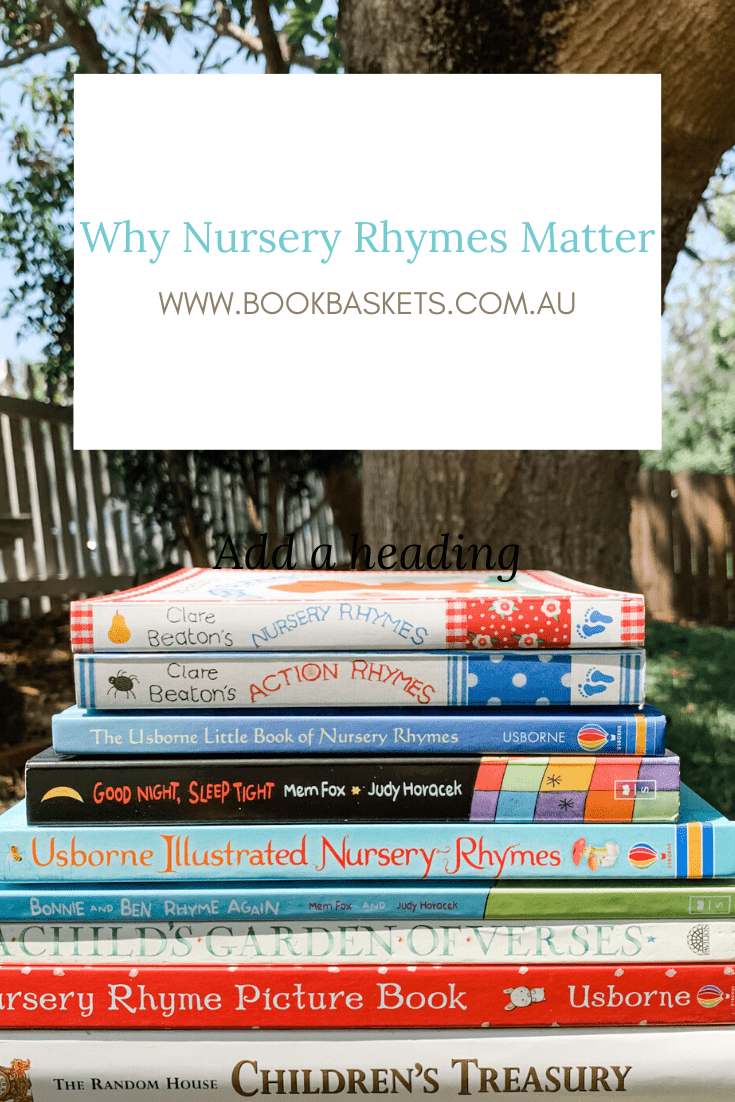
Over to you
Is there anything I’ve missed?
Do you read nursery rhymes to your children or grandchildren?
Which ones are your favourites?
I’d love to hear what you think so drop me a line in the comments.
3 Comments
Submit a Comment
References
Gillon, G.T. (2005). Phonological Awareness: Evidence to Influence Assessment and Intervention Practices. Language, Speech, and Hearing Services in Schools. Vol, 36(4), 281-284.
Griffin, P; Burns, M.S. & Snow, C.E. (Eds.). (2011). Preventing Reading Difficulties in Young Children. Washington, USA: National Academies Press.
Meter, D; Hamby, D. & Dunst, C. (2011). Relationship Between Young Children’s Nursery Rhyme Experiences and Knowledge and Phonological and Print-Related Abilities. Retrieved 10 January 2020 from https://www.researchgate.net/publication/320332692_Relationship_Between_Young_Children’s_Nursery_Rhyme_Experiences_and_Knowledge_and_Phonological_and_Print-Related_Abilities
Moats, L. & Tolman, C. (n.d.). The Development of Phonological Skills. Retrieved 10 January 2020 from https://www.readingrockets.org/article/development-phonological-skills
Moats, L. & Tolman, C. (n.d.). Why Phonological Awareness is Important for Reading and Spelling. Retrieved 10 January 2020 from https://www.readingrockets.org/article/why-phonological-awareness-important-reading-and-spelling
Opie, I. & Opie, P. (1997). The Oxford Dictionary of Nursery Rhymes. USA: Oxford University Press.
Read, K; Macauley, M. & Furay, E. (2014). The Seuss boost: Rhyme helps children retain words from shared storybook reading. Retrieved 10 January 2020 from https://journals.sagepub.com/doi/abs/10.1177/0142723714544410?journalCode=flaa

Hello!
I’m Felicity. I write about children’s books and reading and about their potential for enriching the lives of young humans.
I review picture books, board books and sometimes books for older children.
As well as being a lover of all things to do with books and reading, I’m a mum of three young adults and a primary school teacher. I also create gift baskets filled with the very best books for children from newborns to four-year-olds.
Welcome. It’s nice to meet you.

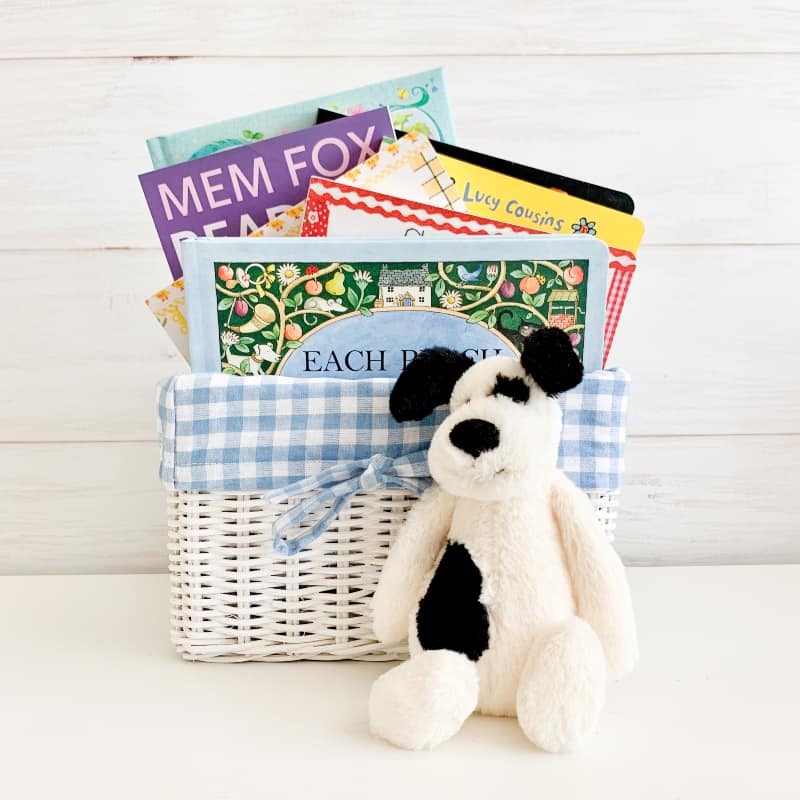
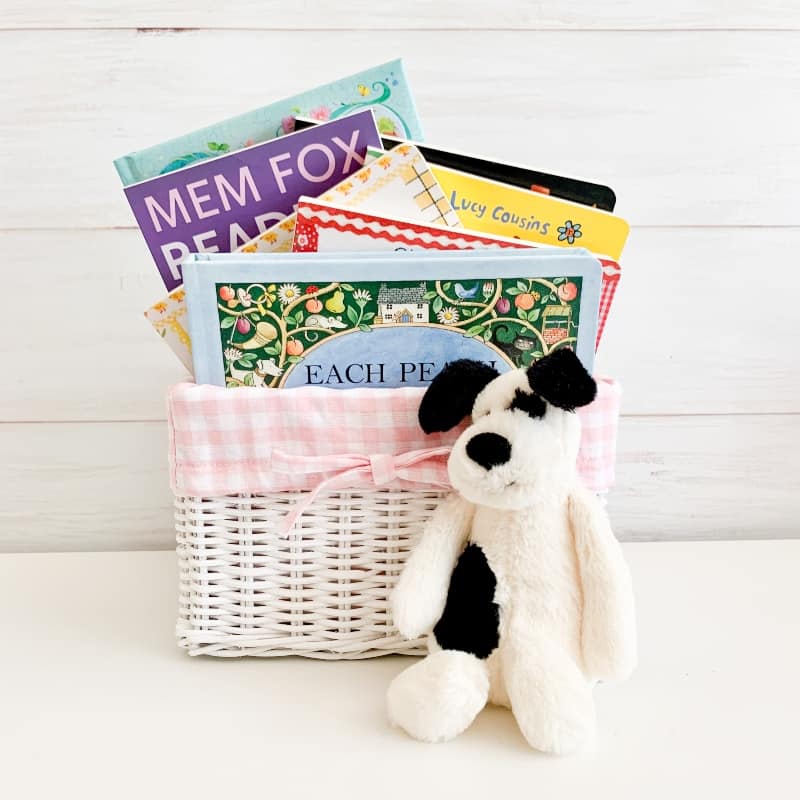
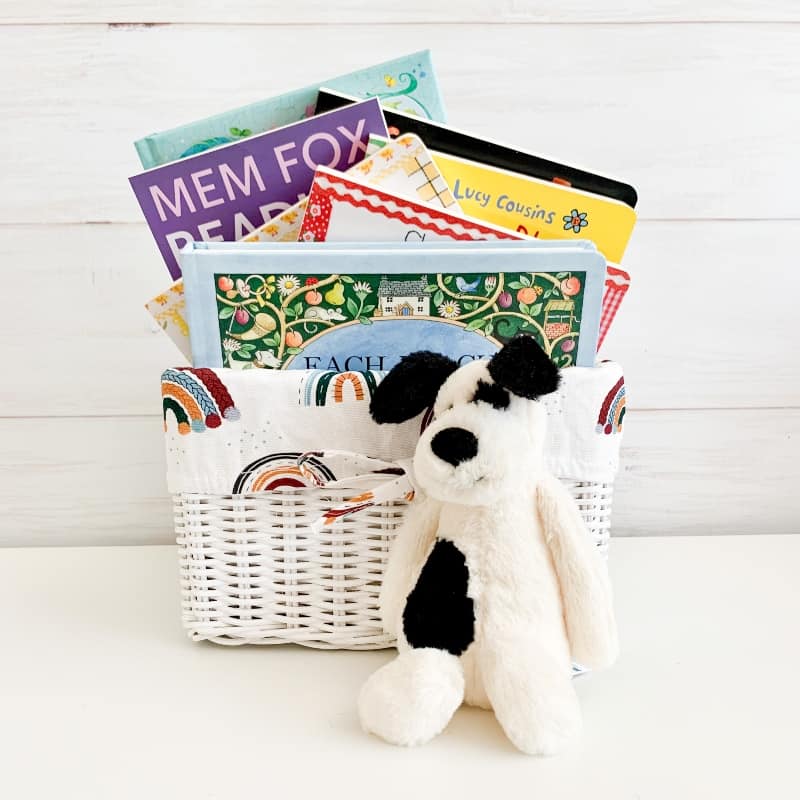
What a great article! Thank you so much and thank you for adding the references to the studies/books that have inspired you in writing this 🙏
Thank you for your kind comments. I’m glad you found the article useful.
Thank you for a very informative read! I’m covering poetry in my library lessons and nursery rhymes will be featuring for my younger students. Some great reminders here about their importance in this world where screens are all too easily accessible.
Thank you again for highlighting all the reasons why we should continue to teach nursery rhymes – I am definitely going to keep this in mind!